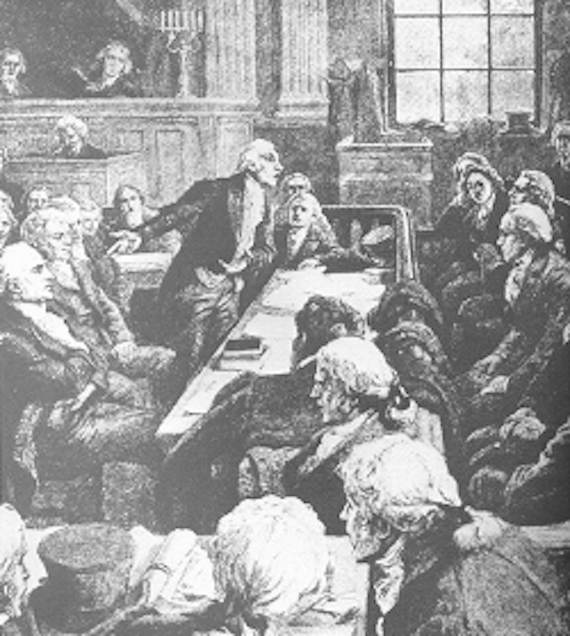Ann Arbor (Informed Comment) – Only three holders of the top executive offices in the country, the presidency and the vice presidency, have ever been tried in federal court. They are Aaron Burr (d. 1836), who had served as Thomas Jefferson’s vice president; Spiro T. Agnew (d. 1996), who served as Tricky Dick Nixon’s vice president; and Donald John Trump, 77, the 45th president of the United States. Agnew pleaded no contest to cheating on his taxes as governor of Maryland and was given a suspended sentence. His case is not like the two others, which have more similarities.
Similarity
The charges against Burr, of treason, and against Trump, of mishandling classified documents under the Espionage Act, are both of the highest seriousness. Burr could have gotten the death penalty.
If convicted on all counts and if he were sentenced harshly, Trump could get a 90-year prison sentence, i.e. life.
Difference
The sitting president, Thomas Jefferson, directed the prosecution of Burr from the White House. Jefferson, who had defeated Burr in 1800 and then had to suffer four years of him as vice president, loathed Burr and wanted him hanged.
The sitting president, Joe Biden, has been hands off regarding Trump’s prosecution. Not only did he leave it to the Department of Justice, which he insists is independent of him, but Attorney General Merrick Garland also declined to get personally involved, appointing Jack Smith as Special Counsel. The only role Merrick will have played was to sign off on Smith moving forward with an indictment, but apparently it was Smith’s call. The process for Trump is therefore much less politicized and the sitting government much less weaponized than it had been in the case of Burr.
Similarity
Both Burr and Trump were accused of endangering national security. Burr was accused of trying to get the territories of the Louisiana Purchase to secede from the Union, and of communicating with the British minister in Philadelphia about the ways London might help in this scheme.
The Minister, Anthony Merry, wrote back to the foreign ministry in London in spring 1805, “I am encouraged to report to your Lordship the substance of some secret communications which [Burr] has sought to make to me since he has been out of office…Mr. Burr has mentioned to me that the inhabitants of Louisiana [the lands recently purchased from France] seem determined to render themselves independent of the United States and the execution of their design is only delayed by the difficulty of obtaining previously an assurance of protection and assistance from some foreign power….It is clear that Mr. Burr means to endeavor to be the instrument for effecting such a connection….He pointed out the great commercial advantage which his Majesty’s dominions in general would derive from furnishing almost exclusively (as they might through Canada and New Orleans) the inhabitants of so extensive a territory . . .”
The Trial of Aaron Burr
Trump was charged under 18 US Code 793 (e): “Whoever having unauthorized possession of, access to, or control over any document, writing, code book, signal book, sketch, photograph, photographic negative, blueprint, plan, map, model, instrument, appliance, or note relating to the national defense, or information relating to the national defense which information the possessor has reason to believe could be used to the injury of the United States or to the advantage of any foreign nation . . . willfully retains the same and fails to deliver it to the officer or employee of the United States entitled to receive it.” Unlike Burr, Trump was not charged with conniving with a foreign enemy, but with having sensitive national security documents at home, on a stage at Mar-a-Lago, in a bathroom, and in a room near where people were gathering, thus raising the possibility that the documents could have been taken.
Difference
Burr was out of politics by the time of his adventures out west. Jefferson’s party declined to run him again in 1804, and since he shot Alexander Hamilton to death in a duel, the Federalists didn’t want him either.
Trump is still the head of the Republican Party and is running for president in 2024, and polls suggest that a majority of Republicans so far are sticking with him. Trump’s trial thus has the potential to be much more divisive for the republic than was Burr’s.
Similarity
Burr had a co-conspirator, General James Wilkinson, who was in on the conspiracy until the last minute, when he got cold feet and acted to protect New Orleans and sent a letter to Jefferson detailing the plot. Wilkinson’s letter is cited by historians as the best evidence that Burr really was involved in a treasonous conspiracy.
Trump also had staff and attorneys who were involved in his retention of the top secret documents. Molly Michael, “was deeply involved in all aspects of Trump’s life, advisers said, sitting outside his office, connecting his calls and keeping his schedule,” according to Caroline Anders at WaPo. Texts, documents and photos in the indictment indicate that Molly Michael cooperated with Smith’s team, so she played a role similar to that of Wilkinson in providing smoking guns.



 © 2025 All Rights Reserved
© 2025 All Rights Reserved